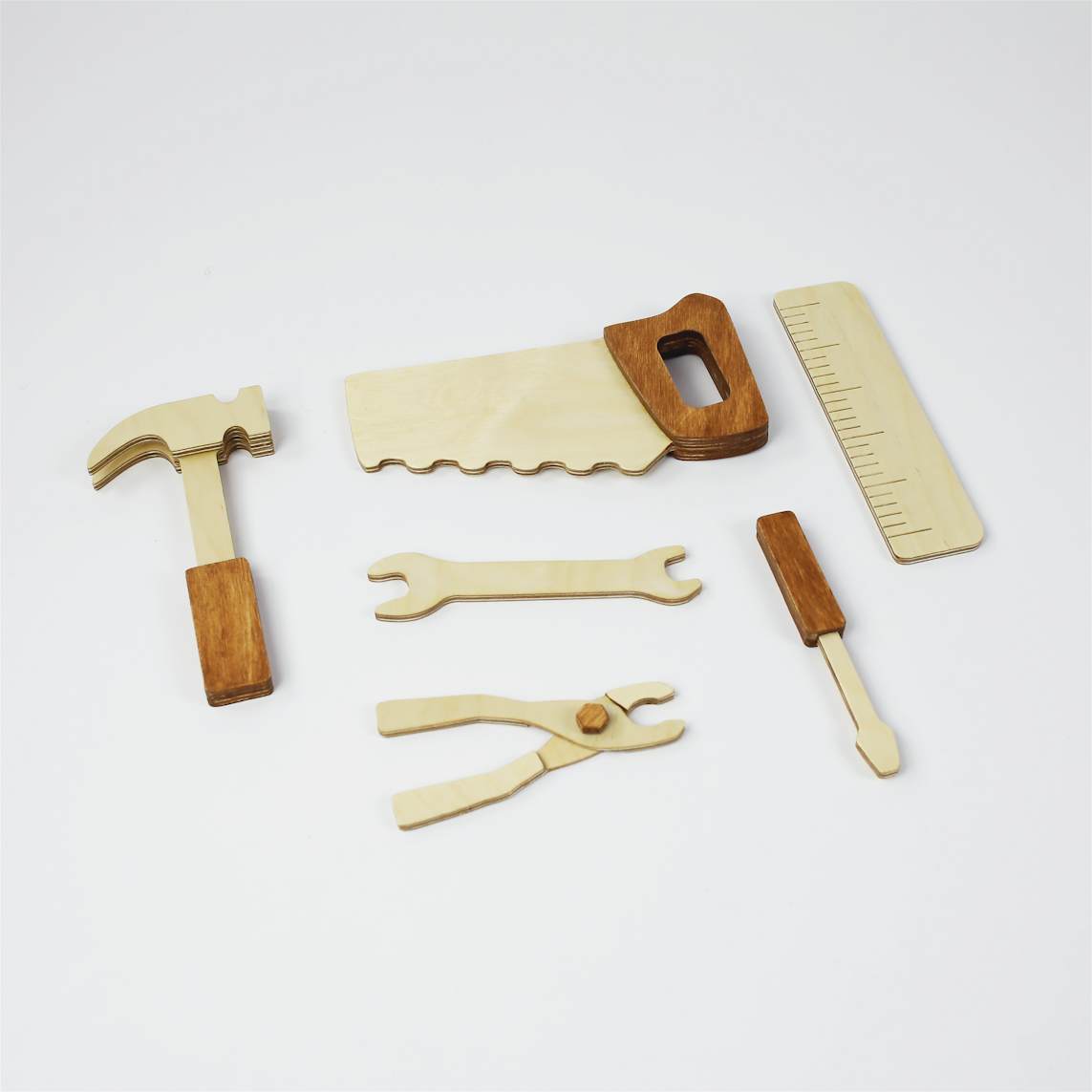Kids Toolset


A six piece wooden toolset, complete with a hammer, screwdriver, pliers, saw, and ruler
1 hr
Easy
237
Toys
Files Included (1)
toolset_v001.svg
15 kB
Materials
1/4" Plywood
1/8" Dowel
Spoilboard
ShaperTape
Double sided tape
Sandpaper
Wood glue
Tools
Shaper Origin
V60 Engraving Bit
1/4" Up-Cut Bit
Clamps
Instructions

Prepare your work table
Setup your spoilboard on top of your work table.
In the area you will be cutting, apply double-sided tape about 2 in. apart on the back of your material. Remove backing from the tape and stick down to your spoilboard.
Clamp the material and spoilboard together securely to the work table.







